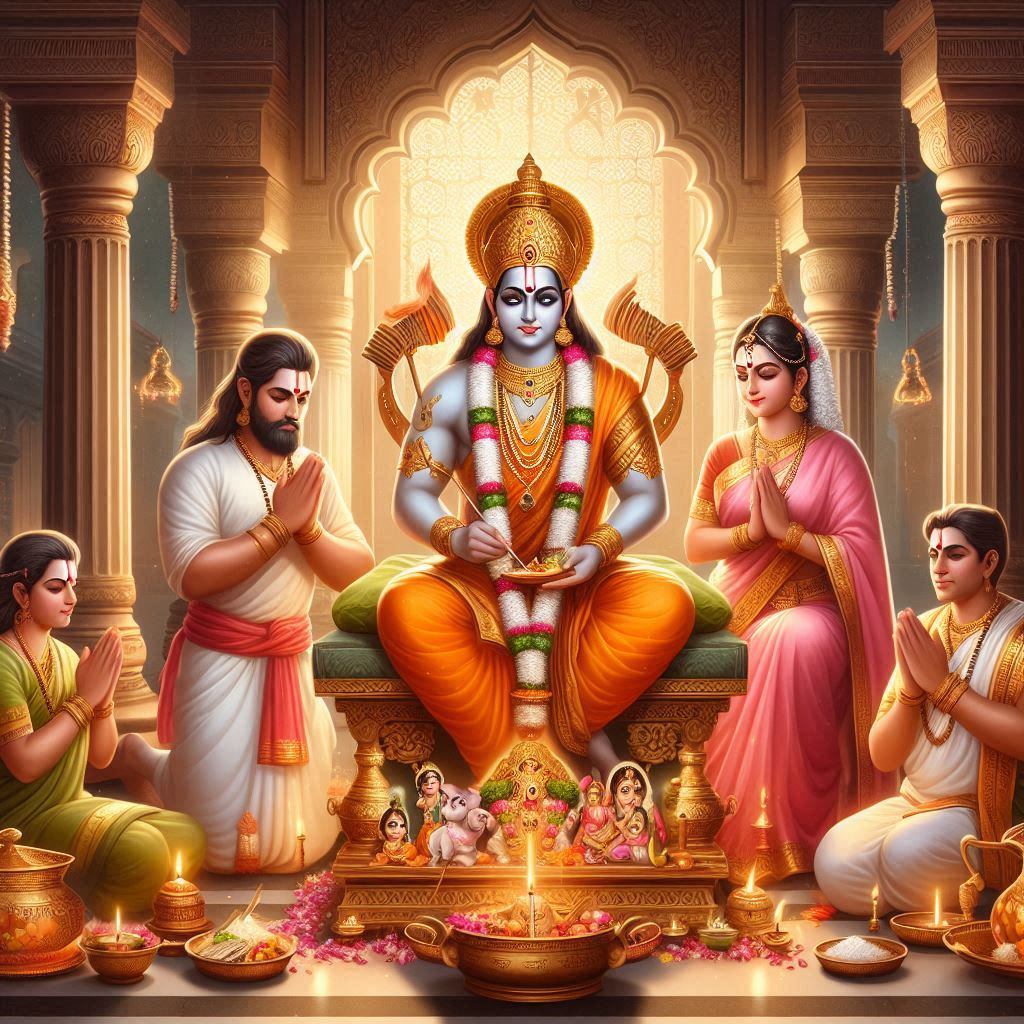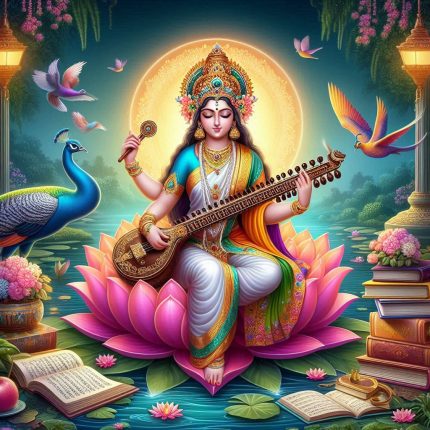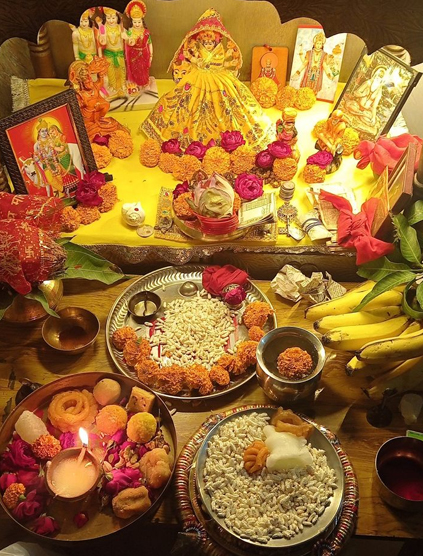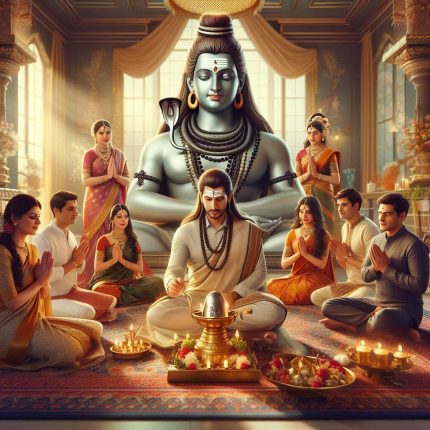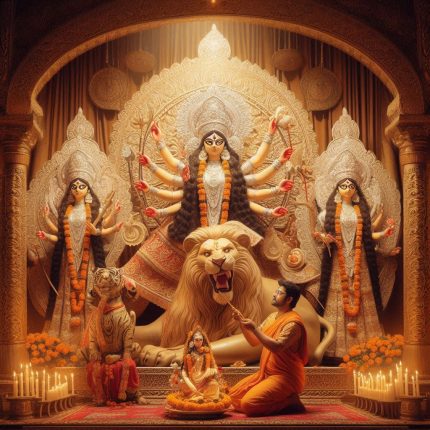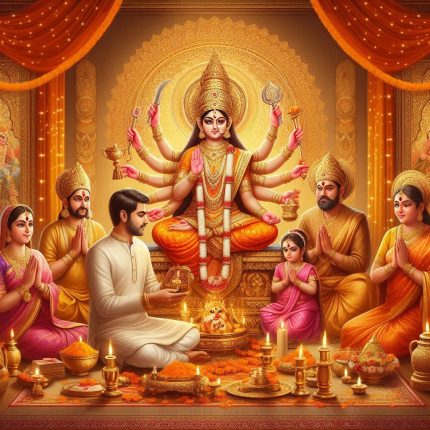Ram Navami Puja: A Celebration of Lord Rama
Samagri
for Puja:
Haldi [organic] (20gm), Kumkum [organic] (20gm), Tulsi Mala (1), Diya Batti (5), Beetle Nuts (5), Desi Ghee (20ml), Honey (20ml), Jaggery (Gudh) (20gm), Akshata [Yellow rice] (20gm), Yagno-paveetha (5), Karpoora [camphor] (5Tabs), Red/White/Yellow Cloth(1 mtr), Prasad [Laung, Elaichi, Mishri] (20gm), Mouli (25mtr), Ganga Jal (15ml), Durva [fresh] (1), Agarbatti (6)/Dhoop (2), Dakshina (100INR), God Idols (pair), Sambrani (2), Sambrani Holder (1), Kalash [small copper] (1), Panchpatra [small copper] (1), Diya Holder (2), Panchamrit spoon (1), Karpoora Holder(1), includes perishables [Beetle Leaves [fresh] (9), Flowers [fresh] (incl mala), Tulsi [fresh], Mango Leaves [fresh] (7)]
Small Havan:
Cow Dung Cake (2), Mango Wood (250gm), HavanSamagri [20+ Grganic Herbs] (100gm), Ghee (20ml)
Yajman to provide:
Curd (100gm), Milk (100ml), Mithai (250gm), Fruits [5types], Coconut (1), HavanKund, SuchiSarva (Havan Spoon) (1), Kalash [big] (1), Bowl [preferably copper/silver] (1), Spoon [preferably copper/silver] (1), Utensils [2 big Plates (for Aarti/Samagri), disposable Plates, Bowls & Spoons], First solid food (preferably Kheer or Payasam)
Importance and Significance of Ram Navami Puja
Ram Navami holds deep significance in Hindu culture, symbolizing the victory of good over evil. Lord Rama represents dharma (righteousness), and his life is a guiding light for millions. The puja serves as a reminder of the values of courage, integrity, and devotion. By performing Ram Navami Puja, devotees seek to align themselves with these ideals and invite the divine blessings of Lord Rama into their lives.
Benefits of Ram Navami Puja
- Spiritual Upliftment: The rituals enhance spiritual awareness and connection with Lord Rama, fostering inner peace and strength.
- Purification: Engaging in the puja helps cleanse the mind and soul, promoting positive energy and well-being.
- Seeking Guidance: Devotees pray for Lord Rama’s guidance in overcoming life’s challenges and adhering to the path of righteousness.
- Community Bonding: The festival often involves communal celebrations, reinforcing familial and social ties.
Occasions to Perform Ram Navami Puja
Ram Navami is primarily celebrated on the birthday of Lord Rama. It can also be observed during other significant events related to Lord Rama, such as during the recitation of the Ramayana or in connection with family traditions.
Ram Navami Puja Vidhi (Procedure)
- Preparation: Clean the puja area and gather necessary items, including an idol or image of Lord Rama, flowers, fruits, sweets, and incense.
- Setup: Create a beautiful altar for Lord Rama, adorning it with flowers and lights to create a festive atmosphere.
- Invocation: Begin the puja by invoking Lord Ganesha for the removal of obstacles. Light the diya (lamp) and offer prayers to Lord Rama.
- Offering Prayers: Recite mantras and shlokas dedicated to Lord Rama, such as the “Ramayana” or specific prayers like “Rama Stotra.”
- Puja Rituals: Perform aarti, offer flowers and sweets, and make symbolic offerings, representing devotion and gratitude.
- Reading of the Ramayana: Many devotees choose to read or listen to the Ramayana on this day, reflecting on Lord Rama’s life and teachings.
- Distribution of Prasad: After the puja, share the prasad (offerings) with family and friends, symbolizing the blessings received from Lord Rama.
- Community Celebrations: Participate in community events, such as processions or bhajan singing, celebrating the divine qualities of Lord Rama.
Ram Navami Shubh Muhurat
The Shubh Muhurat for Ram Navami Puja is determined based on the auspicious timing of Lord Rama’s birth, typically identified by consulting an astrological calendar or a priest.
By performing Ram Navami Puja, devotees honour the birth of Lord Rama and seek his blessings for a life of righteousness, courage, and devotion. This festival serves as a powerful reminder of the enduring values that Lord Rama embodies, inspiring individuals to embrace goodness and virtue in their daily lives.

